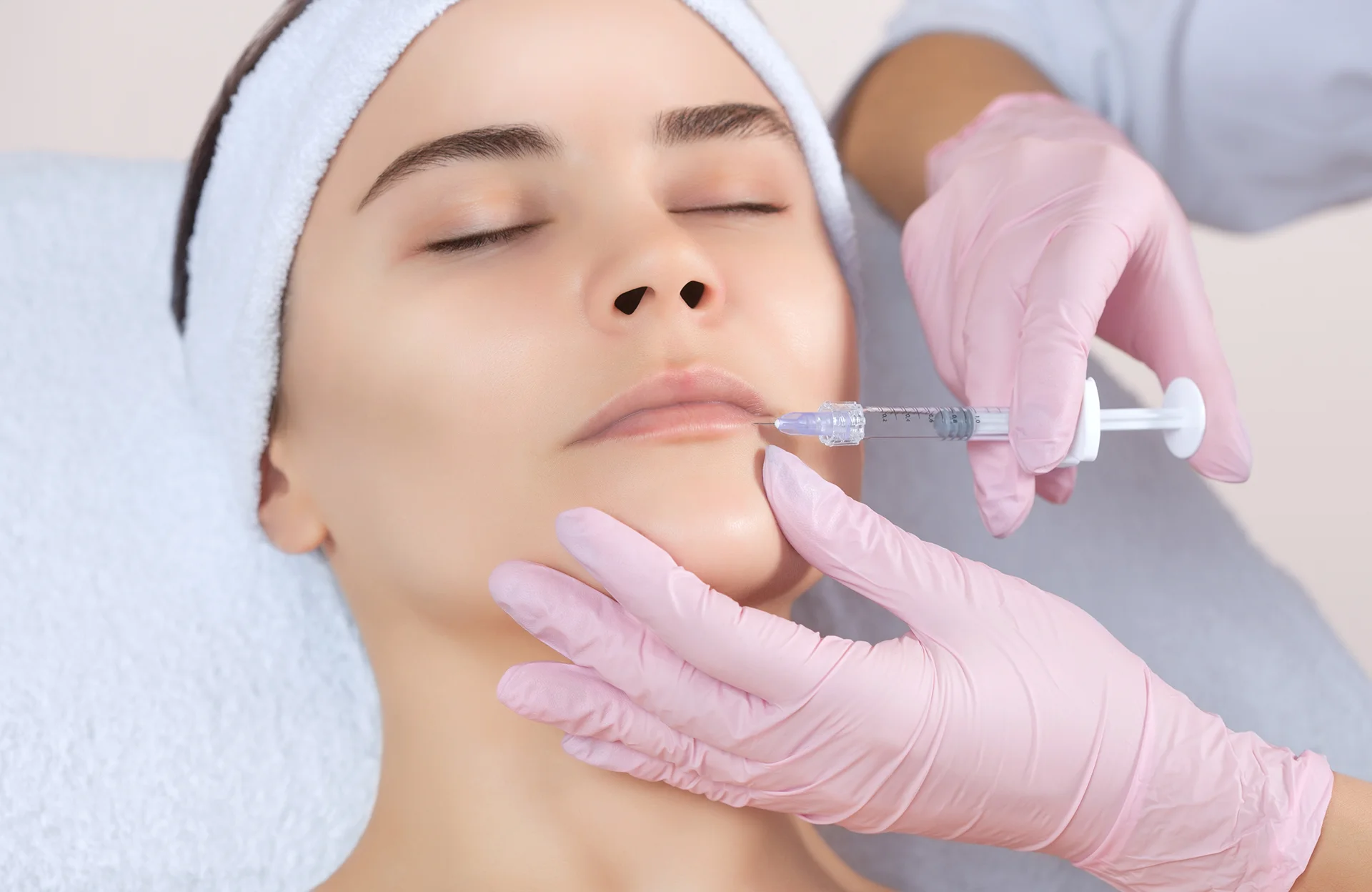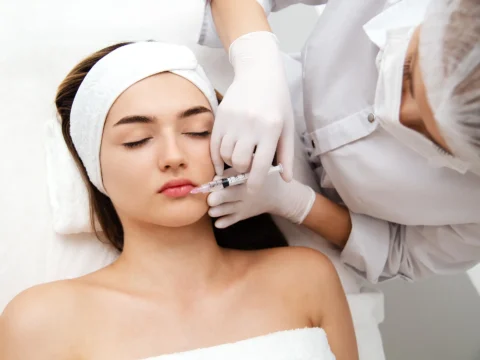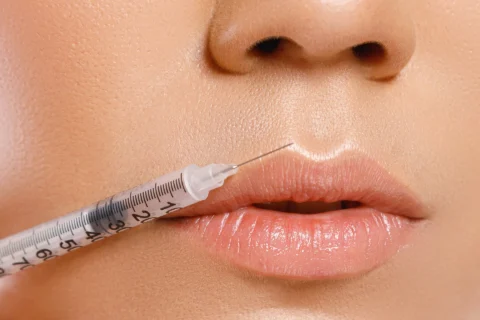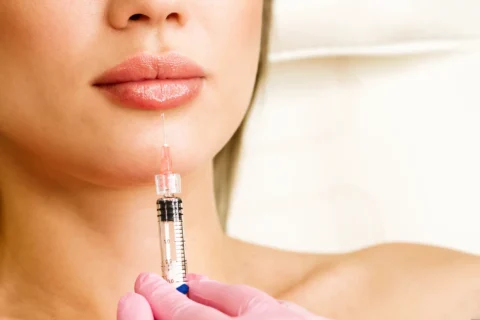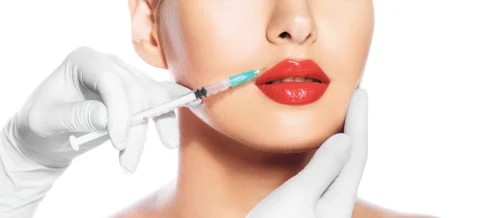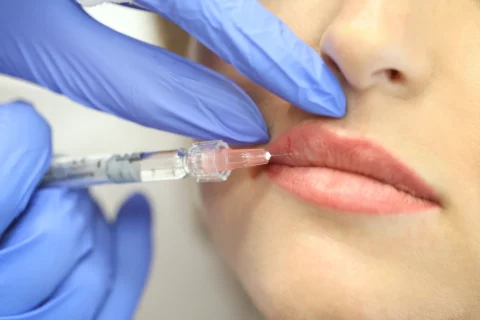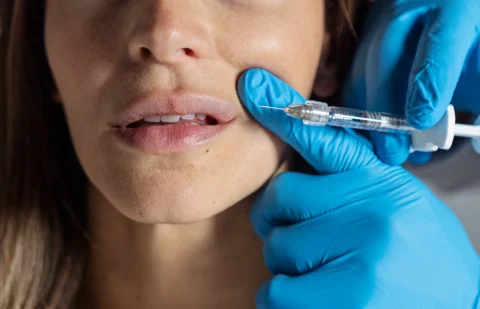No-Go Zones for Lip Filler Injections: Identifying Areas to Avoid for Safe Application
Identifying critical areas to avoid during lip filler injections is vital for safety and effectiveness.
At Ethos Aesthetics + Wellness, Dr. Hardik Soni emphasizes the importance of this knowledge for both professionals and patients.
Understanding high-risk zones ensures informed decisions, highlighting the need for experienced practitioners for successful, safe outcomes.
Anatomy of the Lips and Surrounding Region
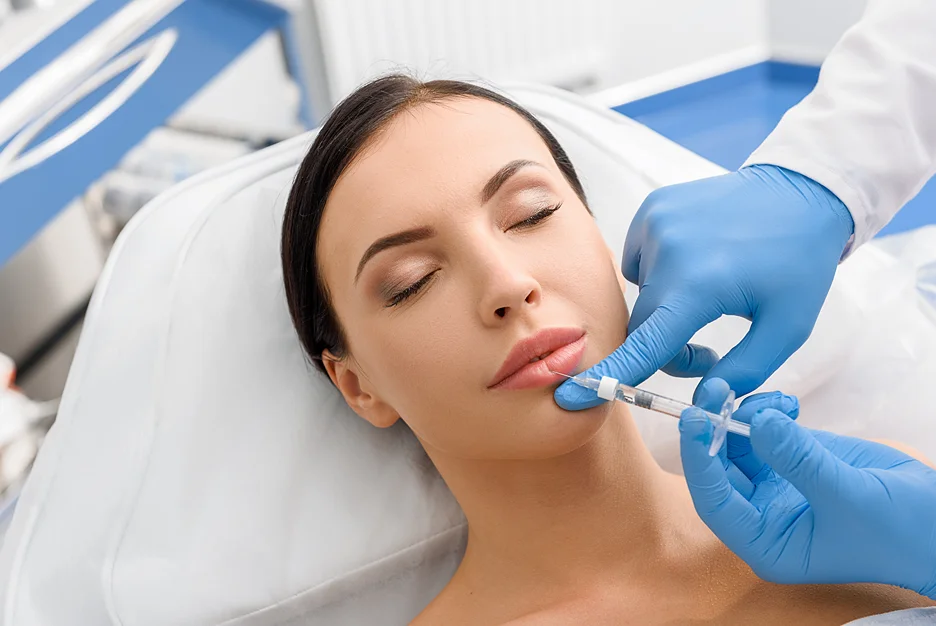
To correctly identify safe and unsafe areas for lip filler injections, a clear understanding of lip anatomy and the surrounding facial structures is crucial.
Lip Composition and Musculature
The lips are complex structures, comprising skin, muscle, glands, and connective tissue. Two key muscles, the orbicularis oris and the zygomaticus major, are instrumental in controlling lip movement and smiling, respectively.
The upper lip features four distinct sections divided by the philtrum columns, while the lower lip is divided into two sections by a central groove.
Vascular and Nervous Systems in the Lips
A vital characteristic of the lips is their high vascularity, with a dense network of blood vessels primarily supplied by the labial artery. This artery extends into superior, inferior, and lateral branches.
In addition to their blood supply, the lips are rich in sensory nerves, providing a sense of feeling. The vermillion zone, noted for its prominent lip color, contains a high concentration of sensory receptors.
Transition to Surrounding Facial Features
The skin of the lips integrates seamlessly with the surrounding facial skin, particularly at the nasolabial folds, which are key to facial expressions and change visibly with age.
Risks Associated with Incorrect Lip Filler Injection
Injecting dermal fillers incorrectly around the lips can lead to significant complications. Key risks include:
- Vascular Occlusion: Injecting near or into blood vessels can block blood flow, leading to vascular occlusion. This serious issue can cause tissue necrosis and extensive damage, particularly due to the lips’ rich vascular network.
- Tissue Damage: Fillers injected superficially or deeply can harm tissues, including muscles and glands. This can result in severe inflammation and swelling.
- Asymmetry: Uneven injections can create imbalances in lip shape, contour, or function.
- Migration: Incorrect injection techniques may allow the filler to shift to unintended areas over time.
- Scarring: Superficial injections or tissue trauma from the filler can lead to scarring during the healing process.
- Neurological Issues: Hitting sensory nerves with filler can cause numbness or other neurological problems.
- Delayed Complications: Some issues, like lumps or discoloration, might not be immediately evident but can develop over time due to improper injection.
For accurate and safe lip filler injections, turn to the professional care of Dr. Soni at Ethos Aesthetics + Wellness.
Understanding Safe Zones and Risks in Lip Filler Injections
Areas to Exercise Caution with Lip Filler Injections
- Lateral Lip Area: Caution is advised when injecting near where the lips meet the nasolabial folds. This area is prone to vascular complications and tissue damage. Additionally, fillers in this zone may migrate over time, leading to asymmetry.
- Vermillion Border (Lip Liner): While enhancements here can be performed by experienced professionals, injecting the vermillion border requires precision. This area is densely packed with sensory nerves and blood vessels, and incorrect technique can lead to pain, nerve damage, and lumpiness.
- Philtrum Columns: The philtrum ridges, running from the cupid’s bow to the lip line, are structurally important for the upper lip. While subtle enhancements are possible, incorrect injections can disrupt the natural contours and increase the risk of vascular complications.
- Orbicularis Oris Muscle: Superficial injections into this muscle should be avoided. Intramuscular filler placement can result in inflammation, lumps, and compromised lip movement.
- Mucosal Membrane (Inner Lip Surface): Deep injections near the mucosal membrane carry risks of intravascular complications and significant tissue damage.
- Area Between Upper Lip and Nose: The space between the upper lip and nose is a complex area with multiple blood vessels. Injections here should be approached with caution due to the risk of vascular occlusion and the potential for visible lumps.
- Cupid’s Bow: Enhancing the cupid’s bow requires a delicate approach. Incorrect injections can easily disrupt its natural curvature and balance.
Areas to Entirely Avoid
- Direct Injection into Blood Vessels: This can lead to vascular occlusion, a serious complication causing tissue necrosis.
- Deep Injections into the Oral Mucosa: The inner lip surface should not receive filler injections due to the severe risks of intravascular complications.
- Inside the Philtrum Columns: Direct injections here can distort lip structure and lead to vascular issues.
- Angular Artery Area: The corners of the mouth near the angular artery are high-risk zones for vascular complications.
In all these areas, the injector’s skill and experience are crucial in minimizing risks and achieving desirable outcomes. Understanding the intricate anatomy of the lips is essential for safe and effective lip filler injections.
The Importance of Choosing a Qualified Professional for Lip Filler Procedures
Selecting a qualified professional for lip filler injections is crucial for several key reasons:
- Ensuring Safety: Lip fillers, while generally safe, require administration by a trained and experienced professional. They have the expertise to assess individual needs and perform the procedure with the highest safety standards.
- Reducing Risks: An experienced and reputable injector reduces the risk of complications such as allergic reactions, infections, asymmetry, lumps or bumps, bruising, and vascular complications.
- Use of High-Quality Products: Qualified professionals guarantee the use of premium products, tailored to meet your specific requirements.
- Achieving Desired Results: Skilled professionals understand how to use fillers to enhance lip appearance effectively and naturally. They have a keen eye for maintaining proper lip proportions and the artistry involved in filler placement.
- Maintaining Hygienic Standards: They adhere to stringent hygienic practices, using sterile equipment and high-quality fillers.
Before selecting a professional for lip fillers, conduct thorough research. Seek recommendations, read reviews, and confirm the qualifications of potential practitioners. Your safety and satisfaction are of utmost importance, so invest time in finding a trustworthy professional.
Patient Assessment and Customization of Treatment
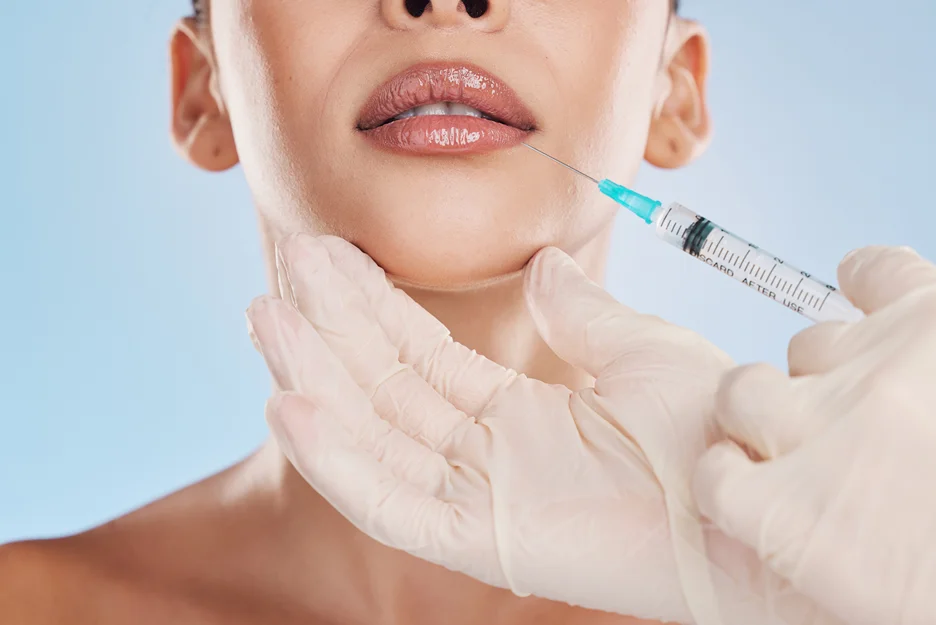
Another key factor in avoiding complications from lip filler injections is the need to customize treatment based on each patient’s unique anatomy and goals.
Here at Ethos Aesthetics + Wellness, Dr. Soni follows an approach that involves:
- Thorough Physical Exam: Carefully evaluating the patient’s lip anatomy and structure, skin quality, degree of aging, and other individual factors.
- Computer Imaging: Using morphing software to show patients a simulated preview of their enhancement options. This sets realistic expectations.
- Conservative Approach: Recommending a gradual, layered technique using low volumes of filler to minimize risk and allow time between sessions to assess results.
- Precise Injection Mapping: Planning exact injection sites, depth, and dosage based on the physical exam and computer simulations. Danger zones are always avoided.
- Checkpoints During Treatment: Frequently checking on the patient and making minor adjustments during injections to ensure proper technique and placement suited to each individual.
With this tailored approach, Dr. Soni ensures patients receive the individualized treatment required for beautiful, natural lip enhancement while avoiding high-risk areas.
Conclusion
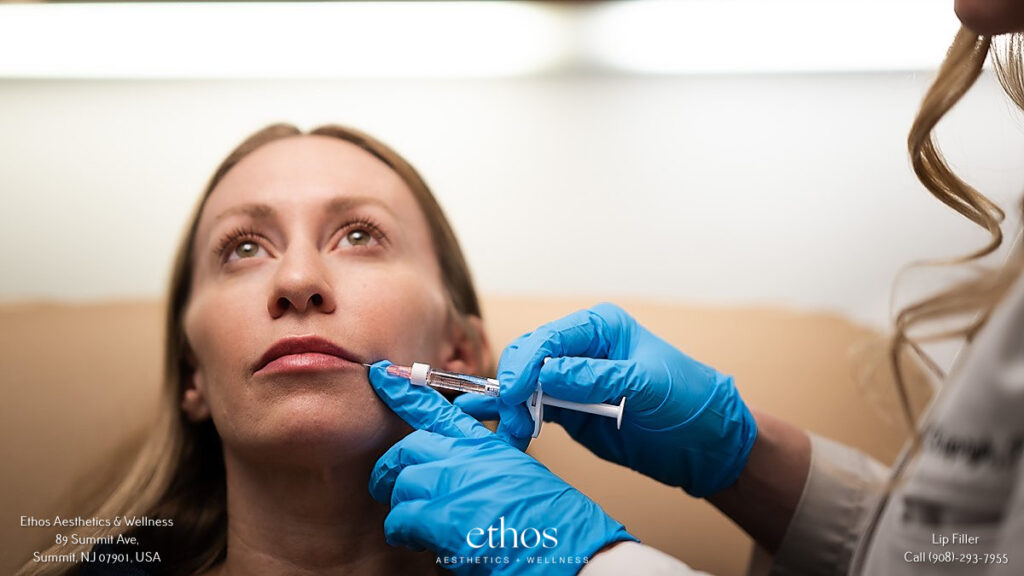
Dermal fillers like Juvederm and Restylane can effectively enhance lips that lack fullness and definition. However, for natural-looking and safe results, these fillers must be administered by professionals well-versed in perioral anatomy.
3 Key Points to Remember:
- Choose Qualified Professionals: Only highly qualified practitioners should perform lip filler injections. They understand where to inject and where to avoid, ensuring balanced and safe outcomes.
- Be Aware of Danger Zones: Areas such as the lateral lip area, lip liner, philtrum columns, orbicularis oris muscle, and the septum between the nose and upper lip are high-risk zones. Injecting fillers in these areas can lead to complications like vascular occlusion.
- Importance of a Comprehensive Approach: A successful lip augmentation involves a thorough patient evaluation, a conservative approach to treatment, and diligent post-procedure monitoring.
Patients seeking lip fillers should prioritize finding reputable injectors who can guide them towards achieving their aesthetic goals safely and effectively.
Ensure your lip fillers are correctly administered by booking an appointment with Dr. Soni, renowned for his precision at Ethos Aesthetics + Wellness.

